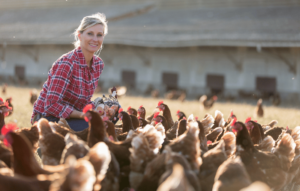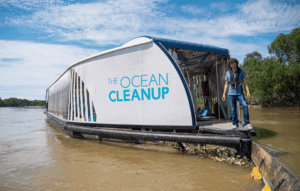When it comes to the food we eat, many of us take certain practices for granted. We so often glaze over, assuming that safety regulations are in place to protect our health – why would we stop to think twice?
One of these practices that is so often overlooked – chlorinating chicken – might sound harmless at first glance… to some… but it does raise some significant health and environmental concerns. If you’ve never thought about why chicken is often chlorinated or what it means for you and the planet, it’s time to take a closer look.
What Is Chlorinated Chicken?
Chlorinated chicken refers to poultry that has been washed or dipped in a chlorine solution during processing. This practice is intended to kill harmful bacteria, such as Salmonella and E. coli, that can contaminate the meat. While this might seem like a straightforward solution to foodborne illnesses, it’s not without controversy or reason for concern.
The use of chlorine in poultry processing is common in the United States, where it’s seen as a cost-effective way to ensure food safety. However, it’s banned in the European Union, where stricter regulations emphasize maintaining higher hygiene standards throughout the entire farming and processing chain rather than relying on chemical washes at the end.
Why Is Chicken Chlorinated?
The chlorination process is typically, supposedly, a secondary response to the unsanitary conditions that can arise in large-scale poultry farming. Industrial chicken farms are often overcrowded, with thousands of birds packed into tight spaces. These conditions create a breeding ground for pathogens, making chemical intervention necessary to reduce contamination risks before the meat reaches consumers.
While chlorination is effective at killing bacteria on the surface of the chicken, critics argue that it doesn’t address the root problem: poor hygiene and inhumane farming practices. It’s essentially a sketchy band-aid type of solution, masking the underlying issues rather than solving them.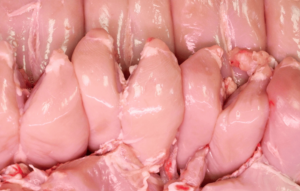
The Health Concerns
One of the main reasons to think twice about chlorinated chicken is the potential health risks associated with the practice. While the levels of chlorine used in poultry processing are generally considered safe for consumption, there are several concerns worth noting:
Chemical Byproducts
When chlorine interacts with organic matter – such as… well… chicken – it can produce harmful byproducts like trihalomethanes (THMs). These substances have been linked to health problems, including an increased risk of cancer when consumed in high quantities over time.
Masking Poor Practices
Chlorination might give the illusion of safety, but it doesn’t ensure the meat is free from bacteria entirely. There’s a risk that consumers might unknowingly consume contaminated meat if the chemical wash fails to eliminate all pathogens.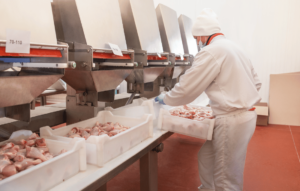
Impact on Gut Health
Some studies suggest that consuming chlorine could have effects on gut health – specifically the gut microbiome. This is particularly concerning given the growing awareness of the gut microbiome’s importance to overall health.
The Environmental Impact
Beyond individual health concerns, chlorinated chicken poses some concerning environmental risks. The poultry industry is resource-intensive, and the use of chlorine adds another layer of ecological strain.
Water Pollution
The wastewater from poultry processing plants, often containing chlorine and other chemicals, can contaminate local waterways. This pollution can harm aquatic ecosystems and affect communities that rely on these water sources.
Chemical Runoff
Chlorinated water can easily leach into the surrounding soil, disrupting local flora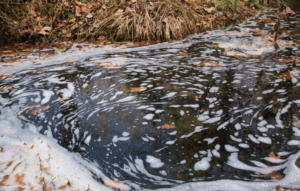 and fauna. This contributes to a broader cycle of environmental degradation linked to industrial farming.
and fauna. This contributes to a broader cycle of environmental degradation linked to industrial farming.
High Carbon Footprint
Industrial chicken farming already has a sizable carbon footprint due to the energy-intensive processes involved. Adding chlorine to the equation increases the environmental toll by introducing yet another chemical process.
What Are the Alternatives?
So, if chlorination isn’t the ideal solution, what can be done to ensure chicken is safe to eat without causing harm to health or the environment? The answer lies in adopting better farming and processing practices.
- Improved Farming Conditions: Free-range and organic farming methods reduce the need for chemical interventions by prioritizing cleanliness and animal welfare. Birds raised in less crowded, more natural environments are less likely to carry harmful bacteria.
- Natural Disinfectants: Some poultry processors are exploring alternatives to chlorine, such as organic acids, steam treatments, or ozone. These methods can effectively reduce bacteria without introducing harmful byproducts.
- Consumer Choices: By supporting local farmers and choosing organic or free-range chicken, consumers can drive demand for more ethical and sustainable farming practices. These choices reduce reliance on large-scale industrial farming and the need for chemical washes.
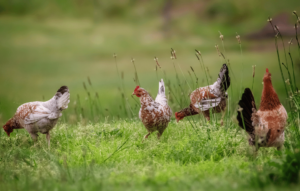
Why You Should Care
Chlorinated chicken isn’t just a matter of food safety; it’s a symbol of the larger issues with our food system. Industrial farming often prioritizes efficiency and profit over health and sustainability, leading to practices that are convenient but not necessarily safe or ethical.
As consumers, we have the power to demand better. By thinking twice about where your chicken comes from and how it’s processed, you’re not just protecting your health – you’re also contributing to a more sustainable and ethical food system.
What You Can Do
If any of this has made you question the chicken on your plate, here are some steps you can take:
- Buy Local: Support local farmers who prioritize ethical and sustainable farming methods. Visit farmers’ markets or join a CSA (Community Supported Agriculture) program.
- Choose Organic or Free-Range: Look for certifications that ensure higher standards of animal welfare and lower reliance on chemical treatments.
- Advocate for Policy Changes: Encourage policymakers to adopt stricter regulations that prioritize hygiene throughout the farming and processing chain rather than relying on chemical washes.
- Educate Yourself: Stay informed about food production practices and their impact on your health and the environment. Knowledge is the first step to making better choices.

Closing Thoughts
Chlorinated chicken might seem like a harmless industry standard, but we certainly think it’s worth examining the broader implications of this practice. From potential health risks to environmental harm, there are many reasons to think twice before accepting chlorinated chicken as the norm. By making informed choices and supporting sustainable practices, you can help drive the change toward a healthier and more ethical food system – for yourself and the planet.


